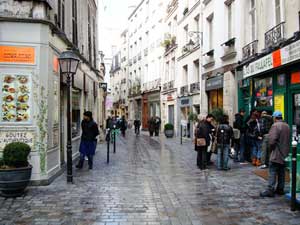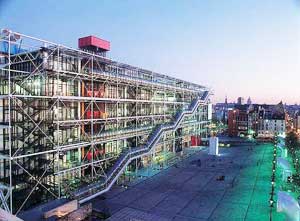
Le Marais is many different things to many different people.
Today, it is one of Paris's coolest neighborhoods with new art galleries, fashion boutiques, cafes and bars opening every week.
At the same time le Marais is the buzzing centre of the city's gay community, full to the rafters with of-the-moment boutiques and bars.
On the other hand, le Marais has strong ties to the Jewish community in Paris, and even to the French aristocracy. The magnificent heritage town houses which can be seen lining the beautiful squares were used to house members of the Royal Court until the King moved everyone to the Palais de Versailles.
The area has had a troubled past.
Transformed into the city's center of fashionable living at the beginning of the 17th century, during the Revolution the royal haunts gave way to slums and poverty. The neighborhood's long-standing Jewish community suffered tragic losses during the Holocaust and it was only in the 1960s that le Marais' historic importance was recognised and the area revived.
Since then the neighborhood has been on the up with wide-scale renovation and gentrification taking place.
Thankfully most of the stunning period buildings have been turned into apartments or boutiques or charming bistros so the neighbourhood still retains its original character. For today’s Parisians, le Marais is the place to come to look for cutting edge fashion and a relentlessly energetic nightlife.
Rue des Rosiers, in the heart of the 4th, is still the center of the city’s Jewish population, though its existence is being threatened by the the continuing influx of cutting-edge fashion boutiques. Superb kosher delicatessens neighbor Middle Eastern and Eastern European restaurants, and on Sundays le Marais does not close down and fall victim to the Catholic sabbath like most of the city.
There is so much to see in le Marais that you could spend your whole trip to Paris in just this one area of the city! A unique mix of historic and new, the neighborhood boasts an impressive list of quirky and worthwhile sights.

Centre Pompidou
This giant of a modern art gallery needs little introduction. Since its construction in 1977, the Centre Pompidou has incited controversy and split opinions. Today though, like it or lump it, the inside-out building is a well established landmark on the Parisian skyline and has proved perenially popular with locals and tourists. The Centre Pompidou's art collection spans the 20th century and the entrance to the museum is on Level 4. It is dedicated to art from the 60's onwards whilsts heavyweights like Duchamp, Matisse and Picasso dominating level 5. Check out the attraction page for the Centre Pompidou for more information.
Place des Vosges
Previously the haunt of French royalty, today the park is full of families playing, idle gossips and cutesy couples. You'll notice that the thirty something buildings in the square look and feel similar. This is because they were all made by the same man - he found a formula that worked. The arcades are lined with art galleries, shops and cafés for your amusement, and the best bit? You can sit, or lounge or doze or picnic, on the grass to your heart's content.
Hôtel de Sully
Paris is hardly lacking in fabulous buildings and architecture, but this has to be one of the most alluring. Built in 1624, the Hôtel was commissioned by the Duc de Sully, minister to Henri IV. The Hôtel also hosts a section of the Musée de Jeu de Paume (the other part is in the Tuileries) which stages photography exhibitions.